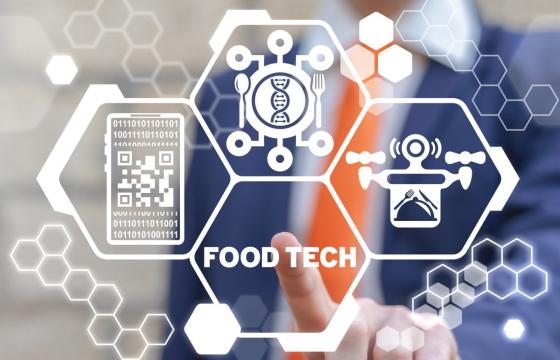
Read the blog below to find out how digitalisation can enable ingredients to be traced throughout their supply chain lifecycle to ensure unprecedented levels of control and visibility are enabled to achieve traceability, operational efficiency, and enhanced food safety.
Tracking technology is becoming more advanced and, as a result, is more accessible to consumers. For example, parcel tracking technology has evolved from drivers physically inputting parcel information to reliable real-time data being delivered to recipients at every step of their parcel’s journey.
However, there are some disparities in the evolution of such technologies depending on where it is applied. While we can track the movement of Amazon orders to the minute, there is substantially less information available for other supply chains, such as the movement of the food we eat. Yes, we can eagerly track a Deliveroo moped, but there is no information available about the food we consume before the point of purchase, for example, where the ingredients were sourced, how the product was stored etc. However, consumers are now becoming increasingly interested in sustainability, the origins of ingredients, and product traceability across production and transportation, as poor service levels and food safety issues attract both industry and consumer interest and destroy trust in current practices.
Essentially, customers now want to be assured of the quality and safety of their food. A good example of this is the use of The Red Tractor logo in the UK, where the symbol is printed on food packaging to signify to customers that the food and drink product in question has been certified to rigorous standards (purchased and sourced responsibly, safely produced etc).
Moreover, organisations within the supply chain now want flexibility, security and accountability across the chain in order to build a robust and future-proofed platform - a requirement that has come to the forefront after the supply landscape has been rocked over the past few years by the pandemic and the war in Ukraine. The fast-paced nature of the food supply industry means that supply and demand often become misaligned and can lead to huge amounts of both food and financial waste, and businesses across the chain must look to work in tandem in order to drive efficiencies, increase productivity and reduce waste.
The answer? A combined effort of technologies that not only provides safety and quality assurance for the food we eat by providing clarity and effective traceability of our ingredients from farm to fork, but that also increases supply productivity and reduces waste through higher visibility and management of demand, production and machine performance.
By leveraging technologies that can collect and manage billions of real-time data points from machines, sensors and tags across the supply chain, valuable insights can be established, such as temperature data or location information. This enables ingredients to be traced throughout their supply chain lifecycle. These technologies also monitor and manage the performance and health of supply chain assets, such as refrigeration and HVAC, and drive automations and actions to ensure optimum settings and performance levels to enhance and protect the safety and quality of food, including driving predictive and preventative maintenance regimes and optimum temperature set point management. Essentially, by bringing the supply chain into the digital world, unprecedented levels of control and visibility are enabled to achieve traceability, operational efficiency, and enhanced food safety.
This digitisation of goods and tracking everything from movement to temperature and storage sounds incredibly technical and expensive. However, technologies, such as IMS Evolve’s, drastically lower the barrier for bringing physical environments into the digital world. By being able to connect to existing machines and infrastructure without the requirement for upgraded or additional hardware, all agents within the supply chain, regardless of size or technological maturity, will be able to leverage such solutions to achieve outcomes.
Alongside a cross-industry consortium, IMS Evolve’s IoT technology recently provided end-to-end traceability of ingredients in the production of a pre-packaged sandwich in a live demonstration of the first ever ‘Digital Sandwich’. The government-backed project, aptly named ‘The Digital Sandwich project’, aims to use IoT technology to add a ‘digital layer’ to the supply chain to bring disparate systems and siloed organisations into one, standardised platform so that suppliers, retailers and customers can all validate the safety and provenance of a product, while supporting the supply chain organisations to improve productivity and reduce food waste.
The technology deployed will be gathering and monitoring product data, from temperature points to location information, all the way from farm through to production and packaging. All products and its ingredient components exist in the digital space.
The data collected can then be monitored and combined in real-time, so that the full data sets can be viewed holistically to provide a conclusive oversight of a products journey and conditions, instantly improving knowledge, communication, and efficiency and enabling chains to tackle common supply challenges more effectively, such as the bullwhip effect, trading uncertainties and labour shortages.
Once leading organisations begin driving digitalisation (e.g. the government enforcing guidance and legislation, or retailers relying on stricter standards for suppliers) it’s likely that the UK food supply chain will experience a digital transformation similar to that in the package delivery sector. Consequently, providing customers with the provenance of food will become a necessity to successfully compete with other outlets, as consumers will increasingly expect real time ‘farm to pack’ information about all the food products they buy.